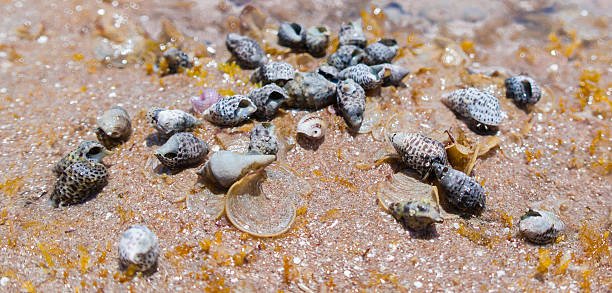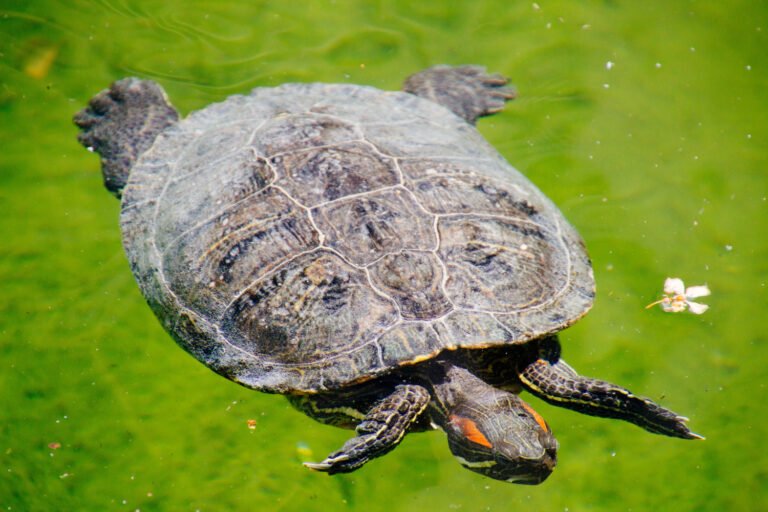Of all the weird and elegant creatures on the earth, the turtles are one of the most remarkable species. Their appearance and such a long history of evolution have contributed much to their mystique. They walk at a slow deliberateness in a hard, invulnerable shell. Tortoises and terrapins also possess many features of a robust and scaly outer layer. Still, people generally ask, “Do turtles have scales?”
This detailed description will help dive into the anatomy of turtles have scales, especially regarding their scales, which are known as scutes, explaining what these do, how they differ from other reptiles, and why such scaly formations play a crucial role in the survival of a turtle. As a battered turtle enthusiast or simply one that is curious about the incredibly interesting world of reptiles, this article will give a comprehensive understanding of why turtles have scales and what they do for the body of a turtle.
Table of Contents
What Are Turtle Scales (Scutes)?
When we refer to the scales found on reptiles, we are talking about small, mainly protective plates formed of keratin—the same type of material that comprises human nails and hair. In the case of turtles, however, the term “scales” is often used interchangeably with the term scutes. One of the reasons why scutes are different is due to the fact that they are actually hard, keratinized plates intended to cover a turtle’s shell as well as other parts of its body, such as its head, neck, and limbs.
Scutes are very important for the survival of a turtle. Tough, overlapping plates, they serve numerous purposes aside from aesthetics. They offer:
Protection: The scutes form a protective barrier, which shields the soft body of the turtle from predators, physical damage, and harsh environmental conditions.
Thermoregulation: They provide thermoregulation, whereby the turtles absorb and reflect sunlight into their bodies, thus keeping them warm or cool, depending on that which is necessary, by controlling their heat levels. This is specifically very important to cold-blooded reptiles as most of them are only able to regulate their body temperature through external heat sources.
Species Identification: Just like a human fingerprint, the pattern, count, and shape of scutes on a turtle’s shell are utilized to identify particular species. A unique pattern of scutes for each species is used by the scientists to differentiate them.

Do Turtles Have Scales on Their Shells?
Yes, the most distinguishing feature or scales/scutes on a turtle is its shell, which is divided into two major parts:
Top Shell: The domed or rounded upper part of the shell is called the carapace. Carapaces are usually covered with scutes, which are often bigger and more noticeable. Scutes form a very formidable layer of protection as they shield the turtle from predators and environmental threats.
Bottom Shell: The bottom half, or plastron, is flat and plated with scutes; however, these are generally smaller in size and don’t project as far as those plating the carapace. It is used to protect the vital organs housed in the body of the turtle and also provides another layer of protection.
While both the carapace and the plastron are made of bone, each outer surface is covered with keratinous scutes that feature the turtles’ characteristic texture, protection, and durability proving some note of that turtles have scales.
Do Turtles Have Scales on Their Head, Neck, and Limbs?
While the most obvious is actually the scutes present on the turtle shell, there are others that could be smaller or not so noticeable at all, such as scutes present on its head, neck, and limbs, although this again could also depend on the species.
Head and Neck: Almost all of the land turtles, including tortoises, have scutes absent from their heads and necks. Again, there are always exceptions, and a great example is sea turtles. Sea reptiles are generally provided with minute scales in their heads and necks thus making the same the outermost protecting shell against most of the dangers due to environments. The scales are much smaller compared to the scutes on their shell but it is part of the overall turtle defense system.
Limbs and Tail: Turtles do have scaly skin on their limbs (arms and legs) and tail. However, these scutes are far thicker and more prominent for land dwellers like tortoises, which need more protection from the harsher, drier environments they live in. Aquatic turtles, such as sea turtles, have smoother and softer scutes on their limbs to help swim. They reduce drag and aid movement in the water.
Turtles have scales it depend on species.

How Do Turtles Shed Their Scutes?
Turtles, being reptiles, also undergo a process called ecdysis, or shedding, in order to help them grow new scutes as they age. Ecdysis is an essential component of a turtle’s life cycle because it will enable its body to accommodate the increasing size of its shell and also to stay healthy and protective.
A patchy loss of scutes from turtles instead of more coordinated general shedding, as is generally observed in different reptiles, such as snakes, characterizes this process. As a turtle grows, the old scutes may get too small or worn out, and the body resorts to shedding them off and producing new larger scutes for it to continue the function of covering and regulating its thermal balance because of this vital part of the turtle shell.
There are many reasons why turtles shed their scutes:
-
Growth: Scutes grow too small for the turtle’s new, expanded shell. Large new scutes replace the scutes that don’t fit anymore so that the shell, just like the turtle, continues to grow.
-
Healing: If damage from an injury or disease has occurred to a turtle’s shell, shedding scutes promotes the growth of new, healthy scutes, which can aid in healing the damaged area.
-
Environmental Stressors: Changes in temperature, humidity, or diet could at times be causes of stress, which forces the turtles to molt. This way, the turtle replaces old or damaged scutes with new ones to cope with the conditions.
Why are Turtle Scutes Important?
Even though turtle scutes are just cosmetic features, they play important roles in the survival of the turtle. Here are the primary functions of turtle scutes:
Protection: Scutes provide hard outer shell armor that gives protection to the turtle from external damages, such as predators. Turtles are slow, hence largely dependent on the shells for their defense. In the absence of these strong scutes, turtles would have been more prone to attacks by predators.
Thermoregulation: Scutes on the tortoise shell give the animal control of body temperature. This means that in such cold-blooded creatures as turtles, some form of external heat source is required to maintain the biological temperature. Scutes may help absorb solar heat or reflect it, depending on what the environment needs.
Species Identification: The pattern of the shell scutes varies with species, and it’s very helpful in knowing the species. The variation, size, and number of scutes of the arrangement of the turtle differ significantly from one species to another, hence aiding scientists in their work of identifying or classifying them.
Camouflage and Defense: Some have scutes that create patterns and textures, thus supporting camouflage, making the turtle blend into its habitats to escape predators. Others have tougher and more armored scutes to defend against attacks from potential threats.
Turtles have scales play role in their survival.

Key Differences Between Turtle, Tortoise, and Terrapin Scales
There is a Chelonian family for turtles, tortoises, and terrapins, but they are quite different from each other, particularly in scutes and shells.
Turtles: Aquatic turtles—most of the freshwater and several species of sea turtles—tend to be somewhat thinner and flexed so they may swim or move easily in the water. The shells tend to be flatter and more streamlined.
Terrestrial tortoises: On the contrary, tortoises have thicker and sturdier scutes suited to the hostile dry environment. Their domed shells are generally found to offer additional protection from predators or environmental forces.
Terrapins: Terrapins are semi-aquatic turtles exhibiting characteristics of both above types. Their scutes are somewhat thicker as compared with those of aquatic turtle species, but they do not have the solidity of land tortoises.
Conclusion: The Strong Importance of Scutes for Survival
In a nutshell, turtles indeed have scales, but what they have is called scutes. These serve an array of vital functions ranging from protection against predators to regulating body temperature and aiding in species identification.
The shed scutes are also important since it enables turtles to grow, heal themselves, and also adjust to changes in the environment. In this way, we appreciate the turtle scutes so that we can realize how complex and beautiful these ancient reptiles are as turtles have scales.
The next time you spot a turtle, spend some time thinking of the shell and the scutes that cover the animal—the remarkable structures that are not just part of its aesthetic but also play a life-or-death role in the wild. Be it the sea turtle gliding through the ocean or a tortoise trekking over land, you will understand that a tough, scaly plate plays the utmost role in the survival of the turtle.
A bit of info from wikipedia Turtle





Pingback: Do Turtles Have Claws? A Comprehensive Guide to Turtle